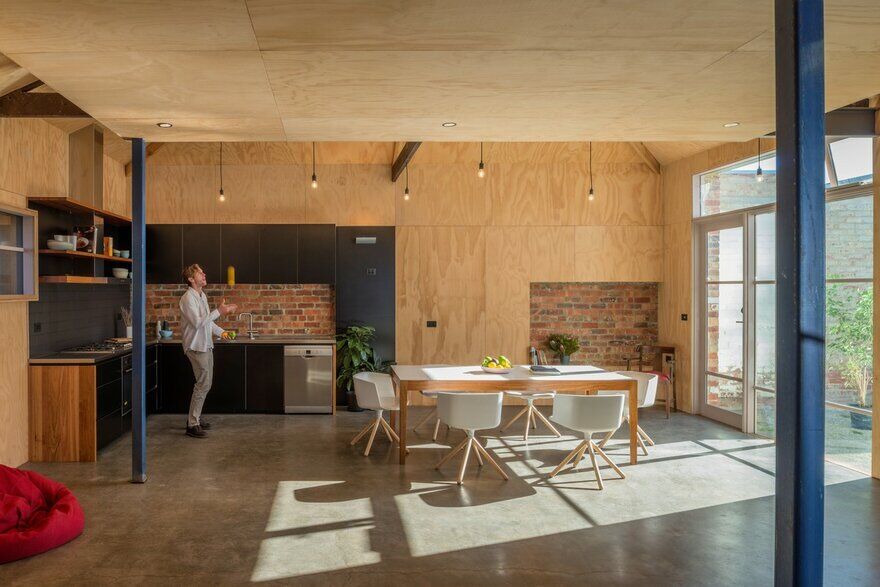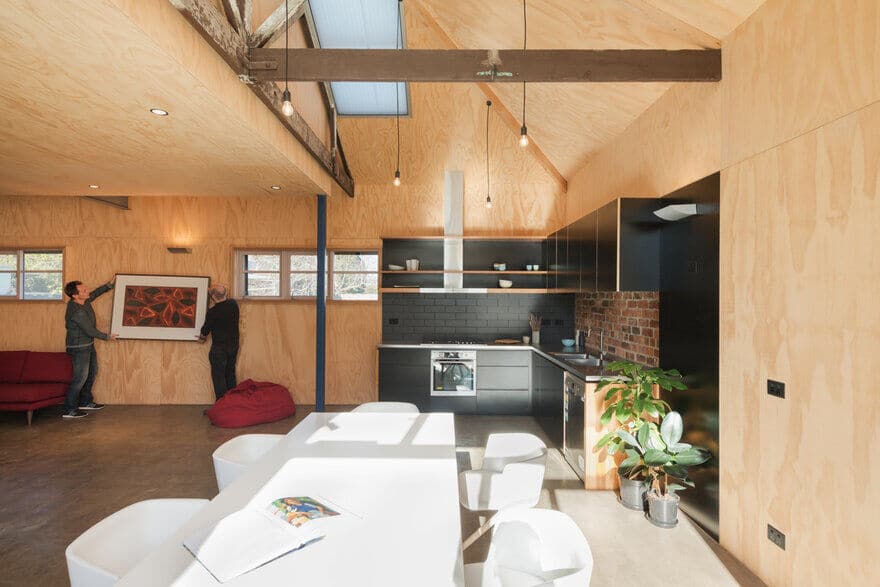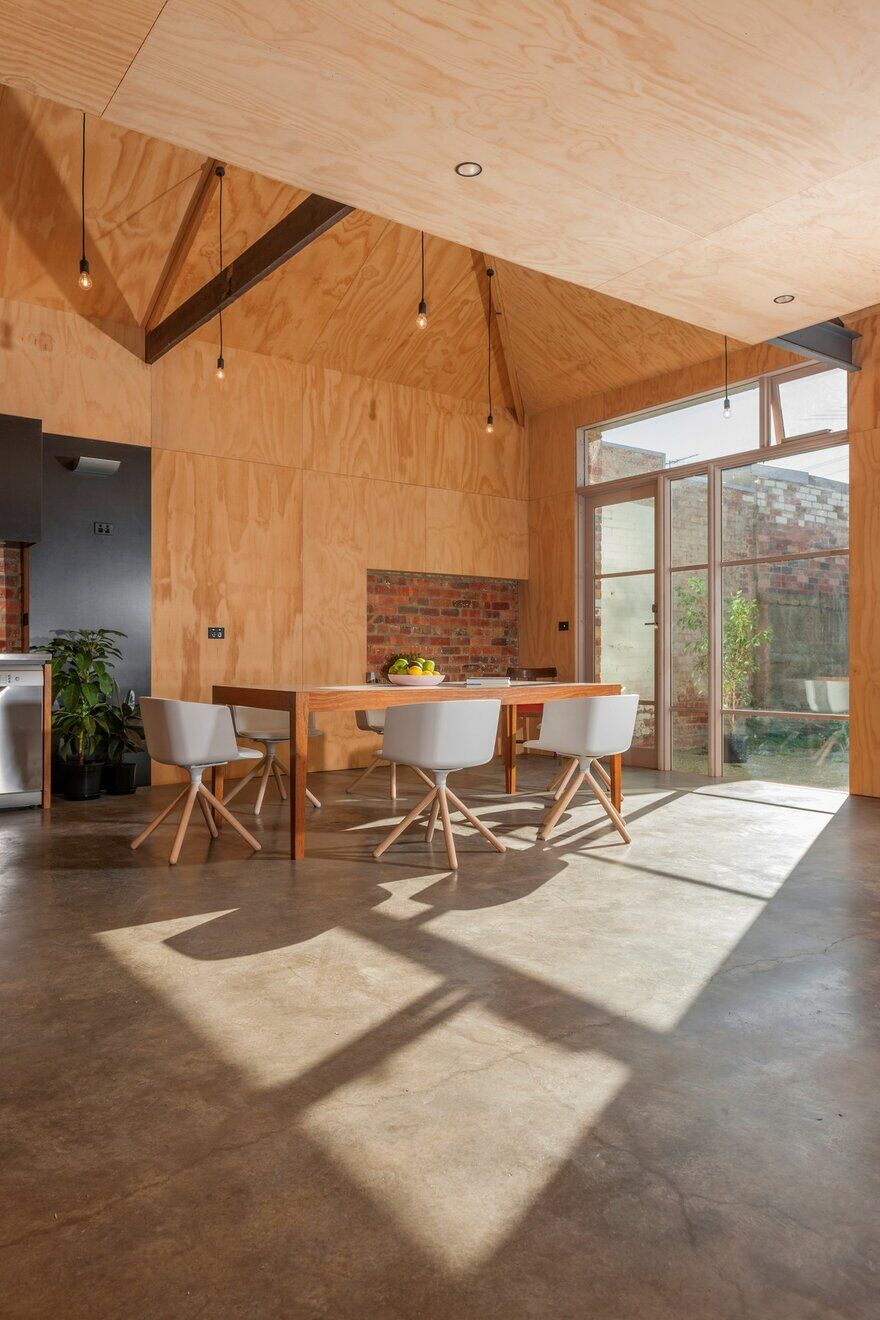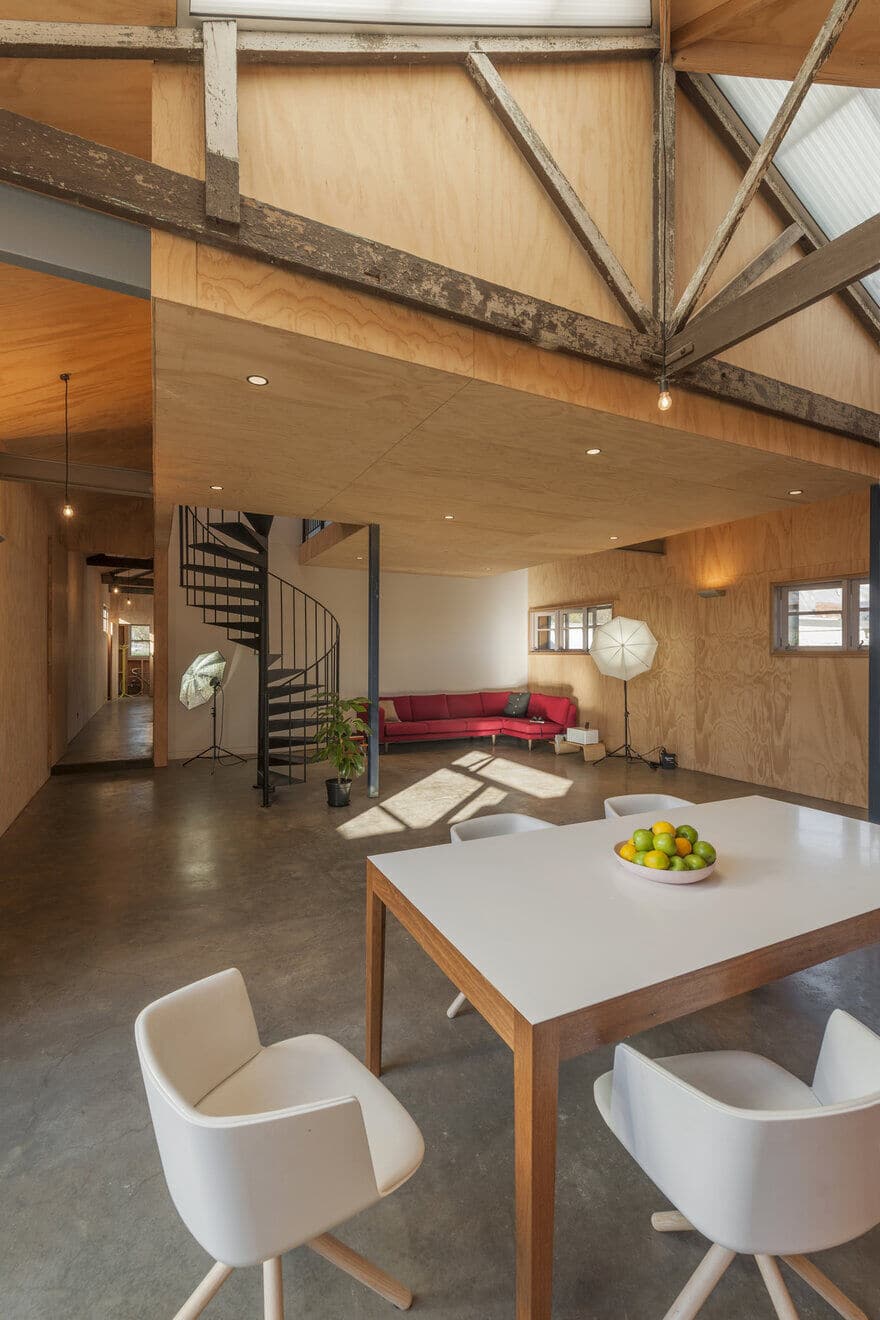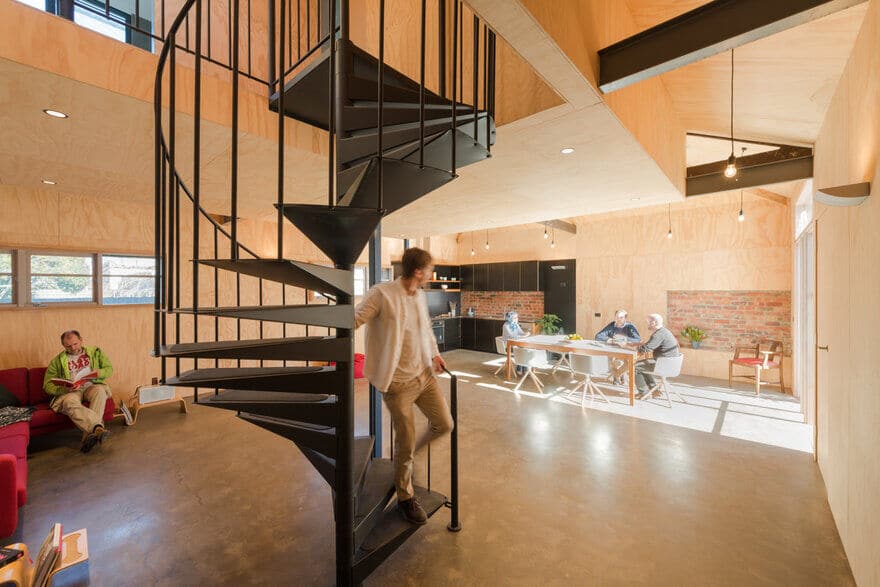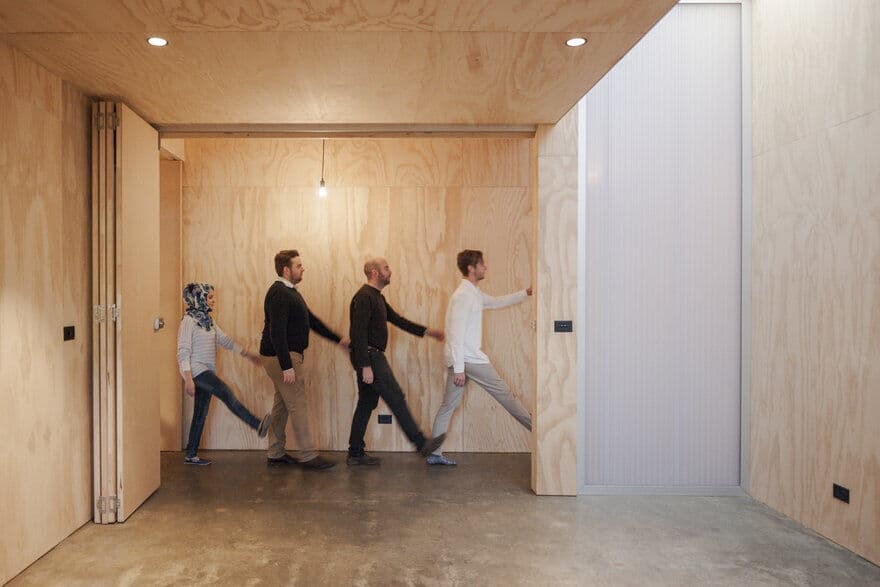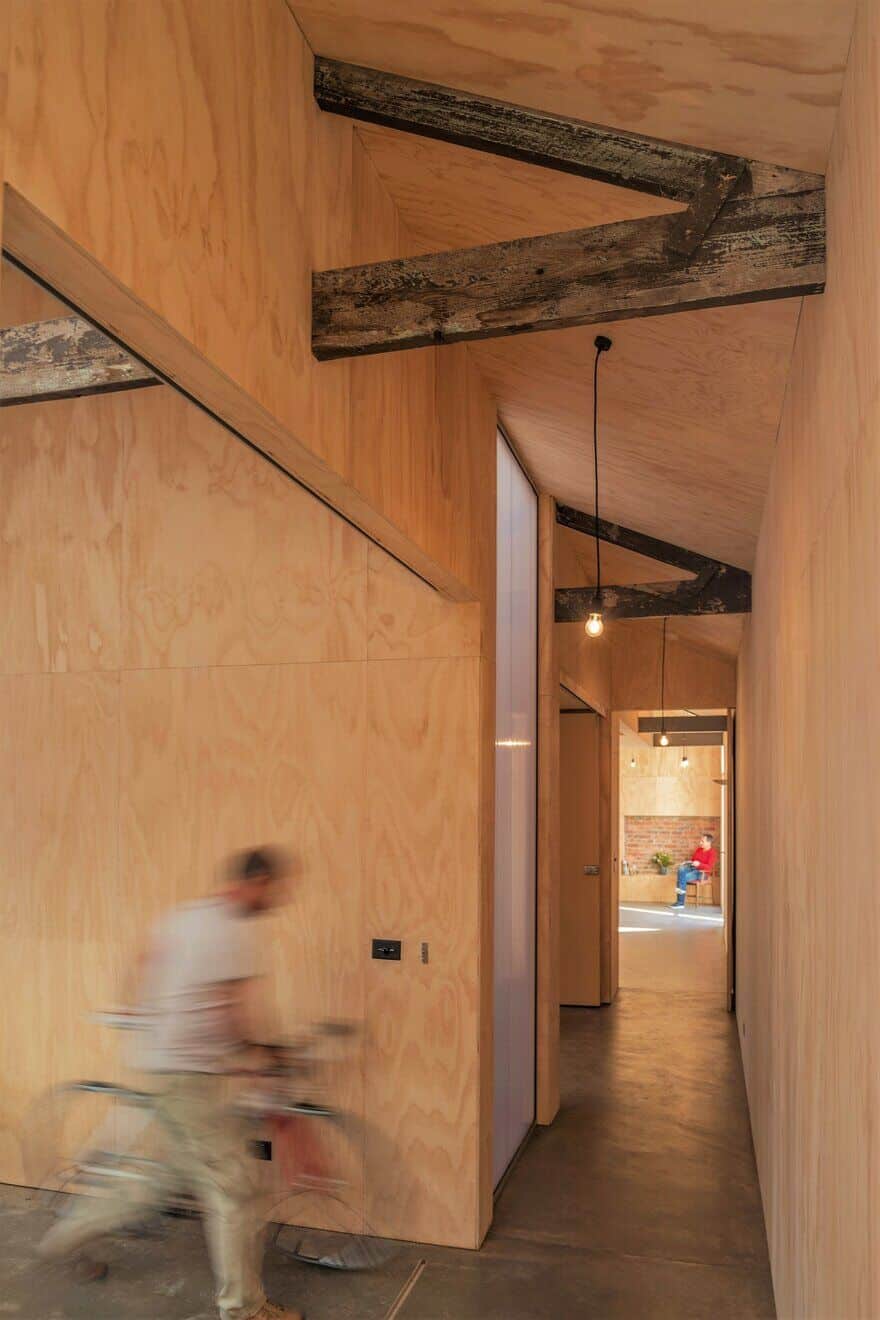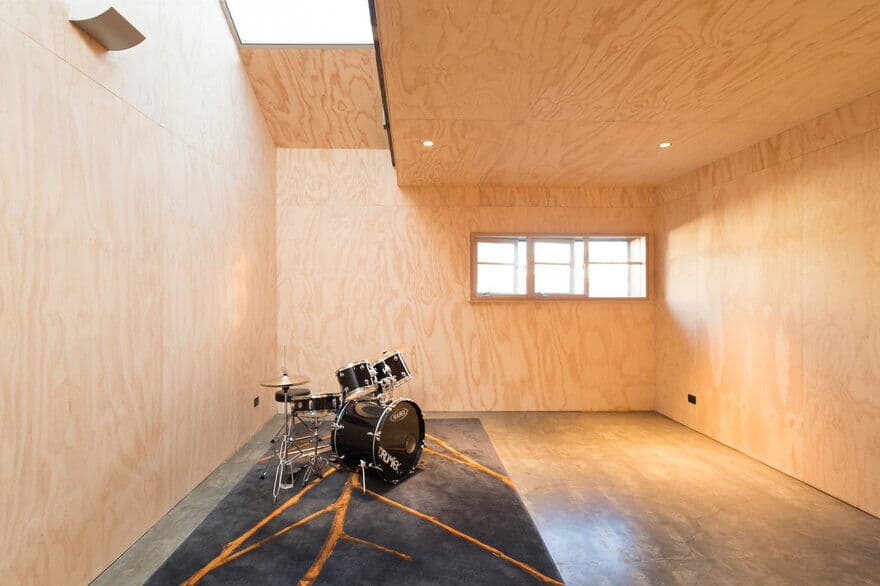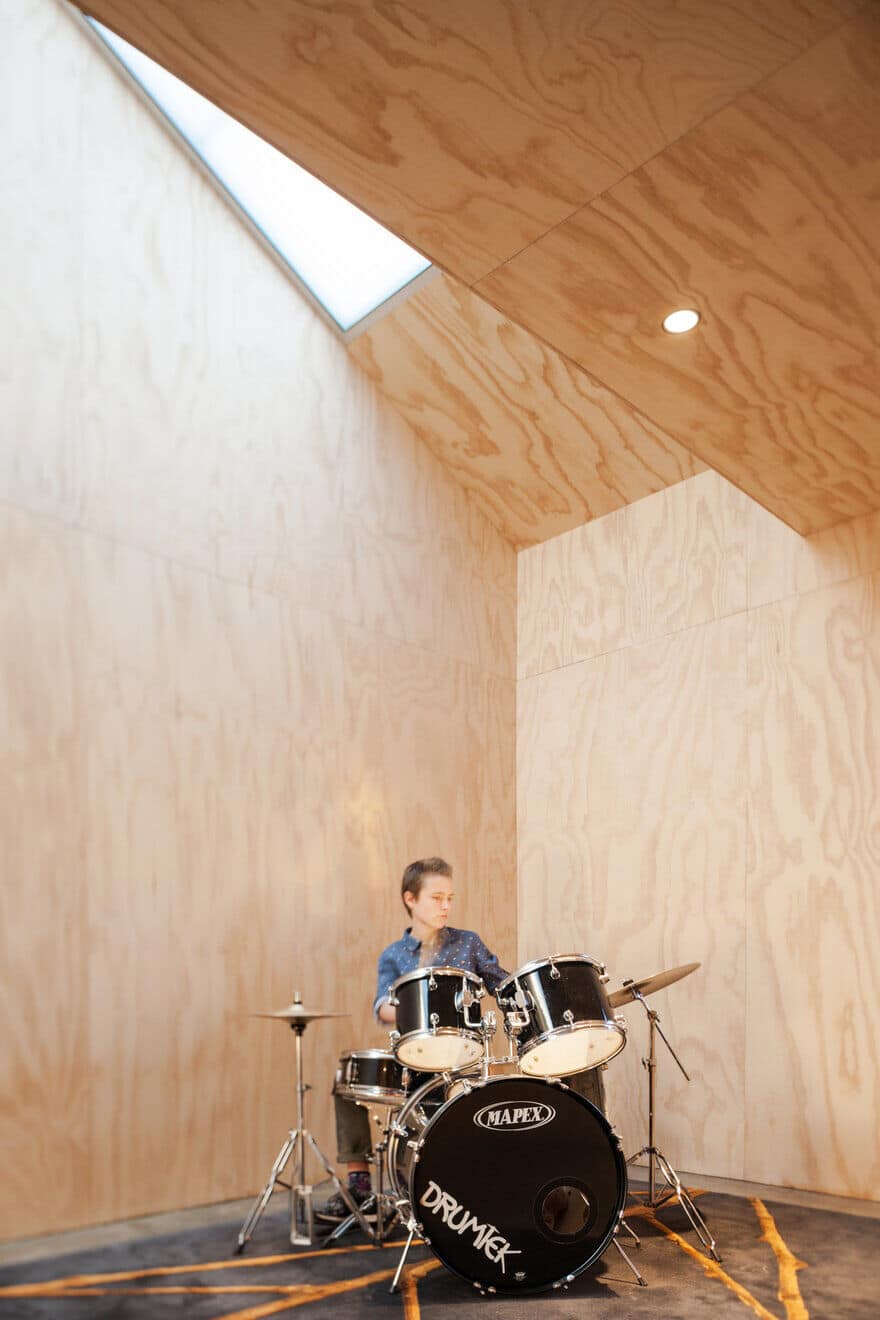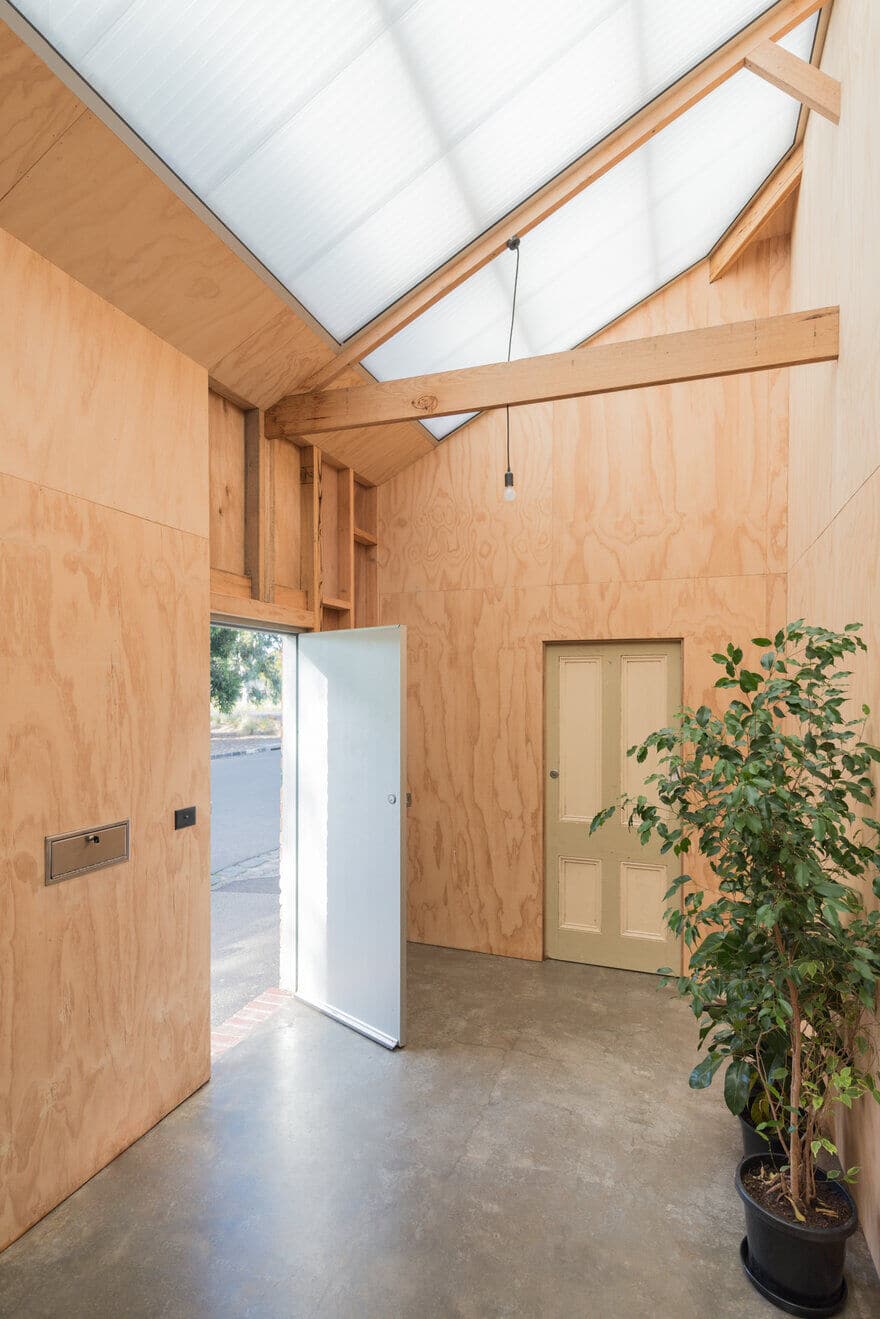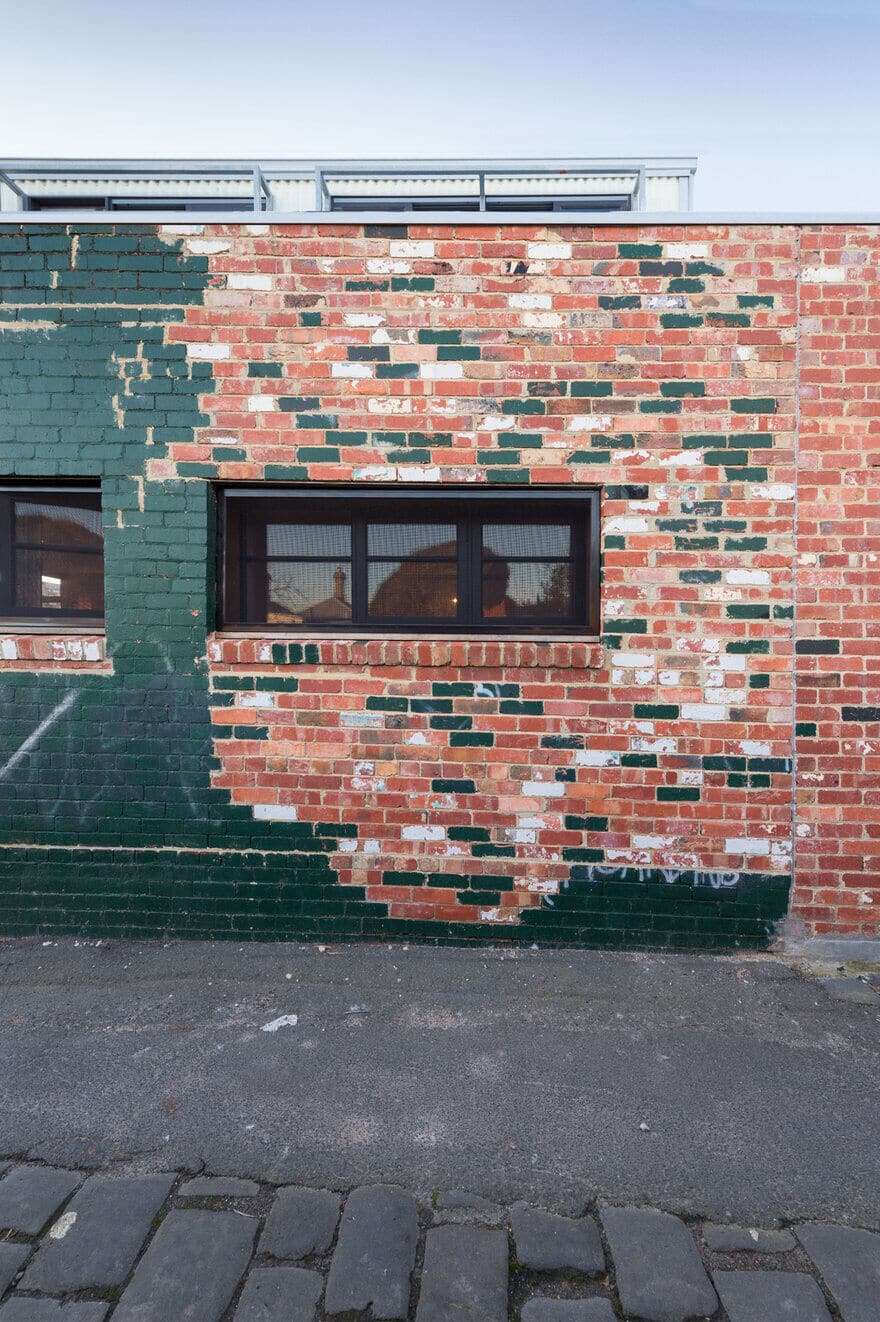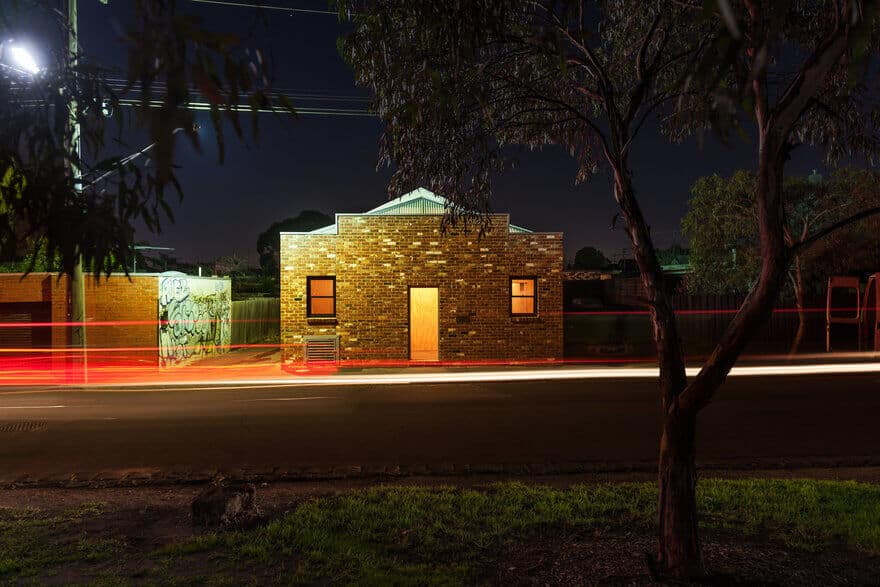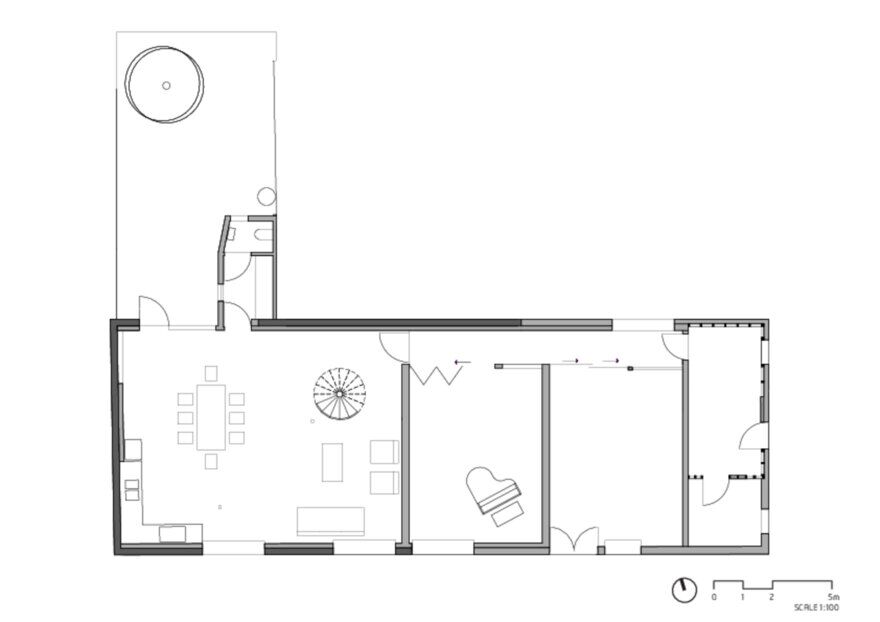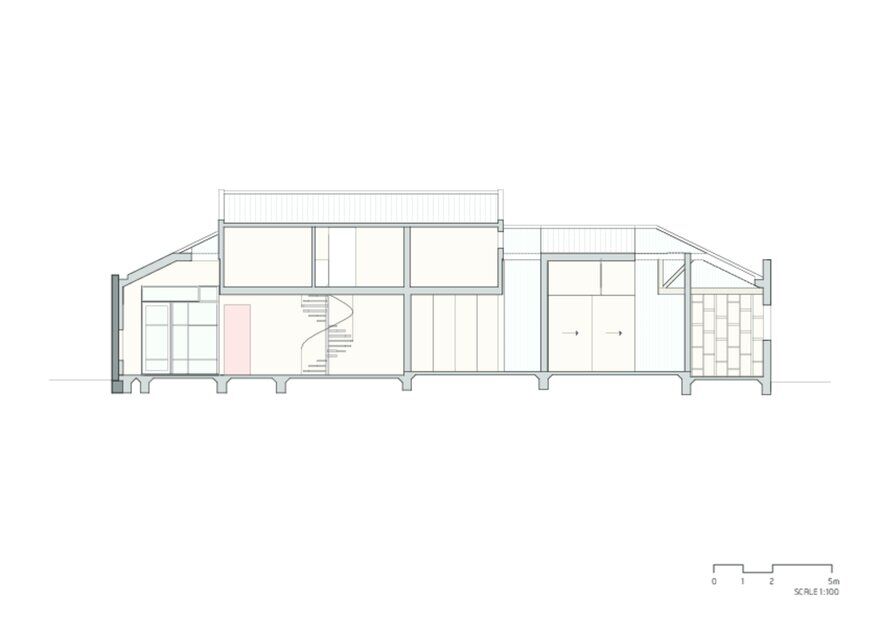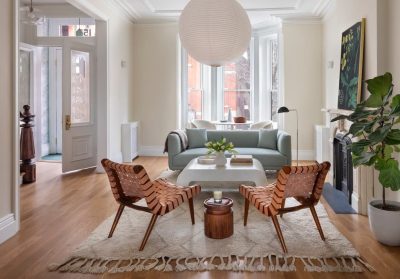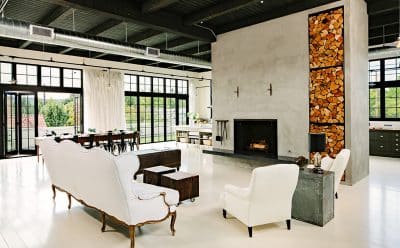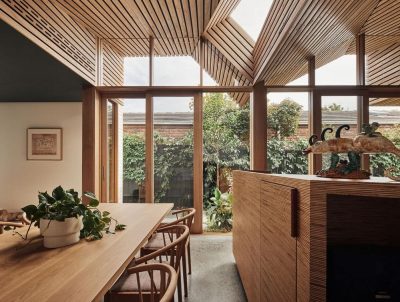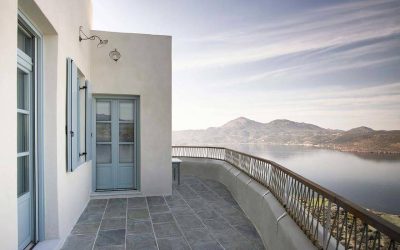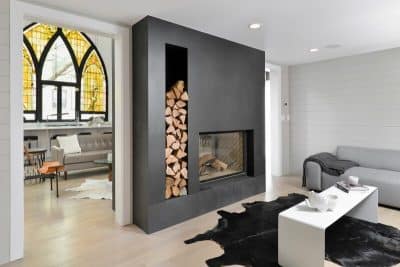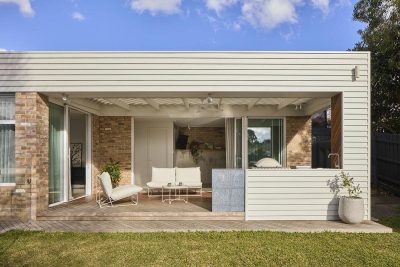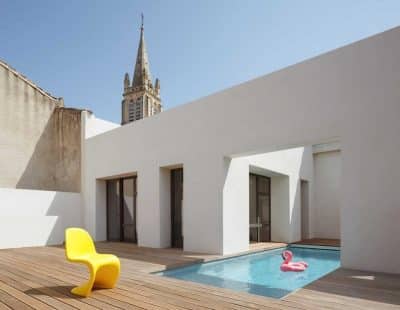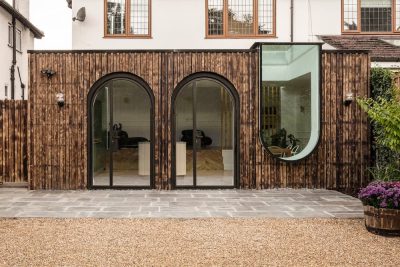Project: Affordable + / Old Factory Building Conversion
Architects: Steffen Welsch Architects
Location: Melbourne, Australia
Area 196 m2
Project Year 2016
Photographer: Wolf-Peter Steinheisser
The Old Factory Building Conversion by Steffen Welsch Architects demonstrates how thoughtful design can transform a deteriorated structure into a vibrant home and creative hub. Located in Melbourne’s inner city, across from a suburban train station, the project reimagines an abandoned print factory and former stable as a residence with dedicated studios for an artist and a musician.
Respecting the Spirit of Place
Although the building’s patina and atmosphere had strong appeal, the original structure was too damaged to save. Instead of abandoning its identity, the architects chose to carefully reconstruct the brick shell in its original form, using materials salvaged on site. This approach preserved the tactile character of the place while allowing for improved energy performance and modern living standards.
Rebuilding with Integrity
The new dwelling features a lightweight first-floor bedroom wing supported by a steel frame, positioned above the open-plan living area below. By combining new insertions with recycled elements, the project achieves both structural stability and continuity with the past. Studios were designed as robust, commercial-style spaces that reduce construction costs and maximize flexibility.
In addition, the architects reinforced parts of the old roof trusses and external walls, merging them into the aesthetic concept. This decision maintained the factory’s historical presence while addressing current building codes. Reassembled bricks, cleaned and reused, significantly reduced embodied energy and added a sense of authenticity to the final result.
Design Challenges and Creative Solutions
The Old Factory Building Conversion faced several challenges, particularly balancing tight budget constraints with the desire for best-practice sustainability. What began as a straightforward warehouse renovation ultimately became a partial demolition and rebuild. Despite this shift, the design team remained committed to retaining the spirit of the original building while ensuring energy efficiency, thermal comfort, and strong ties to the surrounding community.
One of the most distinctive choices was to embrace unfinished materials. The architects deliberately avoided luxury finishes, instead opting for durable, low-maintenance, and cost-effective solutions. For example, concrete slabs were left with a steel trowel finish, while plywood was used for walls and ceilings in an uncoordinated and unfinished state. Polycarbonate sheeting, typically an off-the-shelf material, became part of the ceiling treatment.
A Home That Balances Raw and Refined
The interiors strike a balance between accessibility and sustainability. Kitchen joinery combines black form ply with stainless steel benchtops, while splashbacks use both raw and painted brick. These simple yet striking choices contribute to a non-precious environment that encourages use and experimentation.
At the same time, the architects did not compromise on comfort. High-performance insulation, double glazing, and environmentally sustainable design (ESD) features ensure that the home remains energy efficient and affordable to run. In this way, raw finishes coexist with advanced thermal performance, resulting in a home that is as practical as it is atmospheric.
Re-Imagining Industrial Heritage
Ultimately, the Old Factory Building Conversion is not just a new home—it is a celebration of memory, resourcefulness, and community. By reconstructing the old factory with salvaged materials, the project preserves the essence of place while offering a sustainable model for adaptive reuse.
In the heart of Melbourne, this residence demonstrates how architecture can bridge past and present, creating a space that is both deeply personal and ecologically responsible. The Old Factory Building Conversion stands as a reminder that even modest, unfinished environments can foster warmth, creativity, and enduring value.

